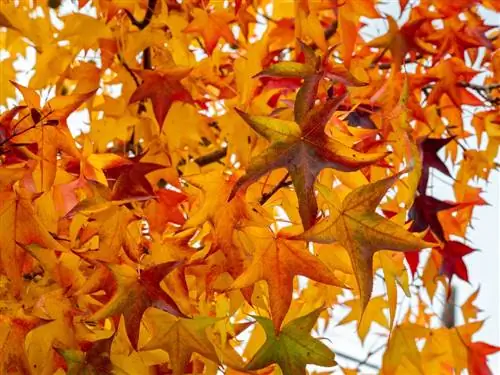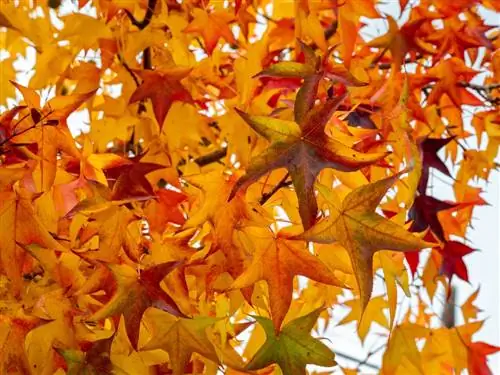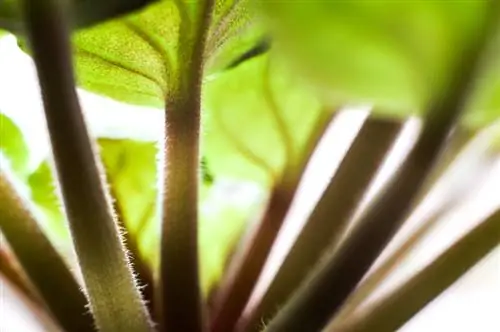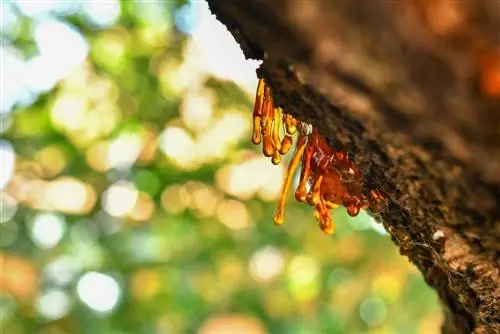- Author admin [email protected].
- Public 2023-12-16 16:46.
- Last modified 2025-01-23 11:22.
The globe amber tree is not particularly susceptible to disease. However, depending on the location, certain complaints may occur. Here you will find out what they are, how you can recognize them and react to them.

What diseases occur in the sweetgum tree and how do you treat them?
Spherical amber tree diseases usually manifest themselves as leaf spots, deformations or plaque. Anthracnose is a fungal disease identified by wilted flowers and leaf spots. The treatment consists of consistent pruning of affected shoots and prevention through optimal location and nutrient supply.
How do I recognize diseases of the sweetgum tree?
Observe theleaves of the globe sweetgum tree. They form a kind of calling card by which you can recognize the he alth of the tree. If there is unusual leaf damage, deformation, spots or a coating, this indicates disease. Unusual changes to the tree's flowers also indicate problems. However, since the tree only bears flowers at a limited time of the year, the leaves are more suitable for diagnosis.
How do I recognize anthracnose on the globular amber tree?
Typically, anthracnose appears in the form ofleaf spotsandwilted flowers In this case it is a fungal disease. The sweetgum tree itself is not very susceptible to diseases of this type. However, if the plant was planted in a somewhat unfavorable location, this fungus can cause problems for the amber tree. It is important that you respond to an infestation and treat the affected gumball gumball. Otherwise, diseases of this type can literally drain the lifeblood of the sweetgum tree.
How do I treat the disease-affected globe sweetgum tree?
You mustconsistently cut back a globular amber tree with fungal diseases of this type. Remove all affected shoots so that no diseased areas remain on the plant. Proceed as follows:
- Use a sharp cutting tool
- Disinfect the blade before cutting
- shorten affected shoots
- Disinfect the blade after cutting
You must not leave the clippings that you have removed from the sweetgum tree lying where they are. Otherwise the diseases can spread in the garden. Burn it or dispose of it in a closed trash.
How do I prevent diseases on the sweetgum tree?
Choose asuitable location for the sweetgum tree and fertilize it occasionally. The sweetgum tree appreciates substrate with many nutrients. By adding some compost you ensure that the soil is nutrient-rich. If the location is difficult overall, you can transplant the tree until it is a certain age. If your sweetgum tree is in a pot, moving it is even easier. With these measures you will ensure that illnesses occur much less frequently.
Tip
Wear protective gloves when pruning diseased sweetgum trees
Toxic substances are found in the resin and sap of the sweetgum tree. These can cause irritation if they come into contact with the skin for a long time. If you cut back a disease-affected globe sweetgum tree, you should therefore wear protective gloves.






